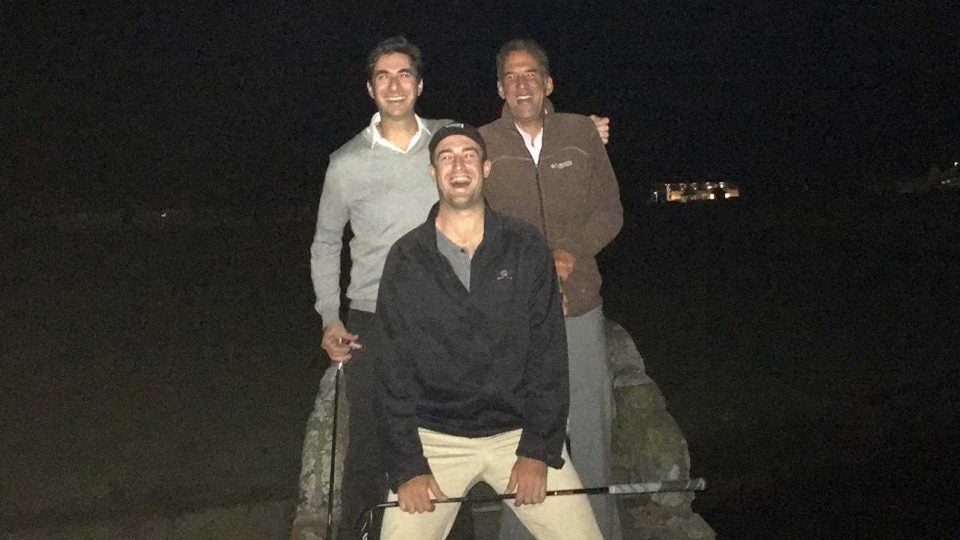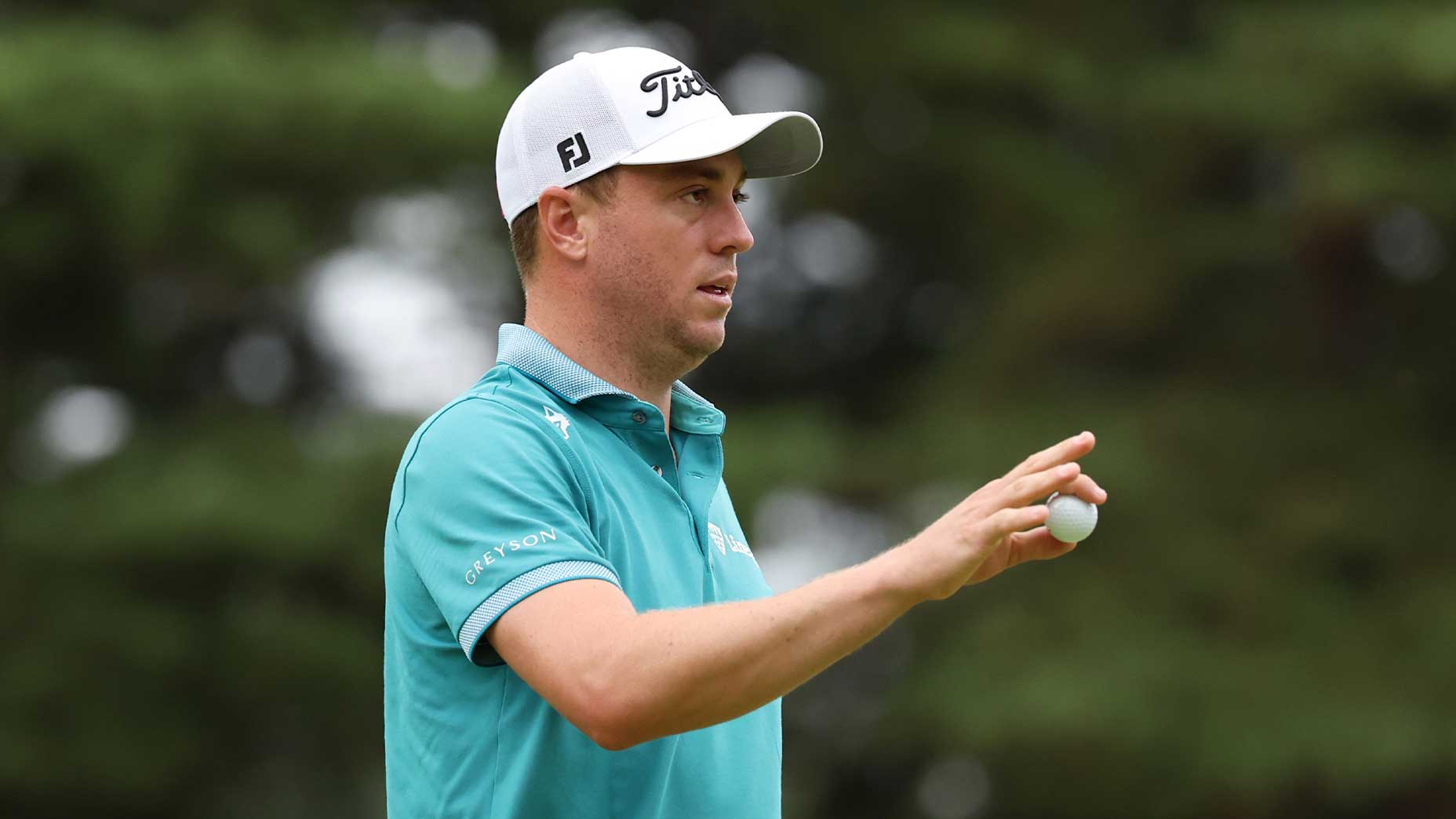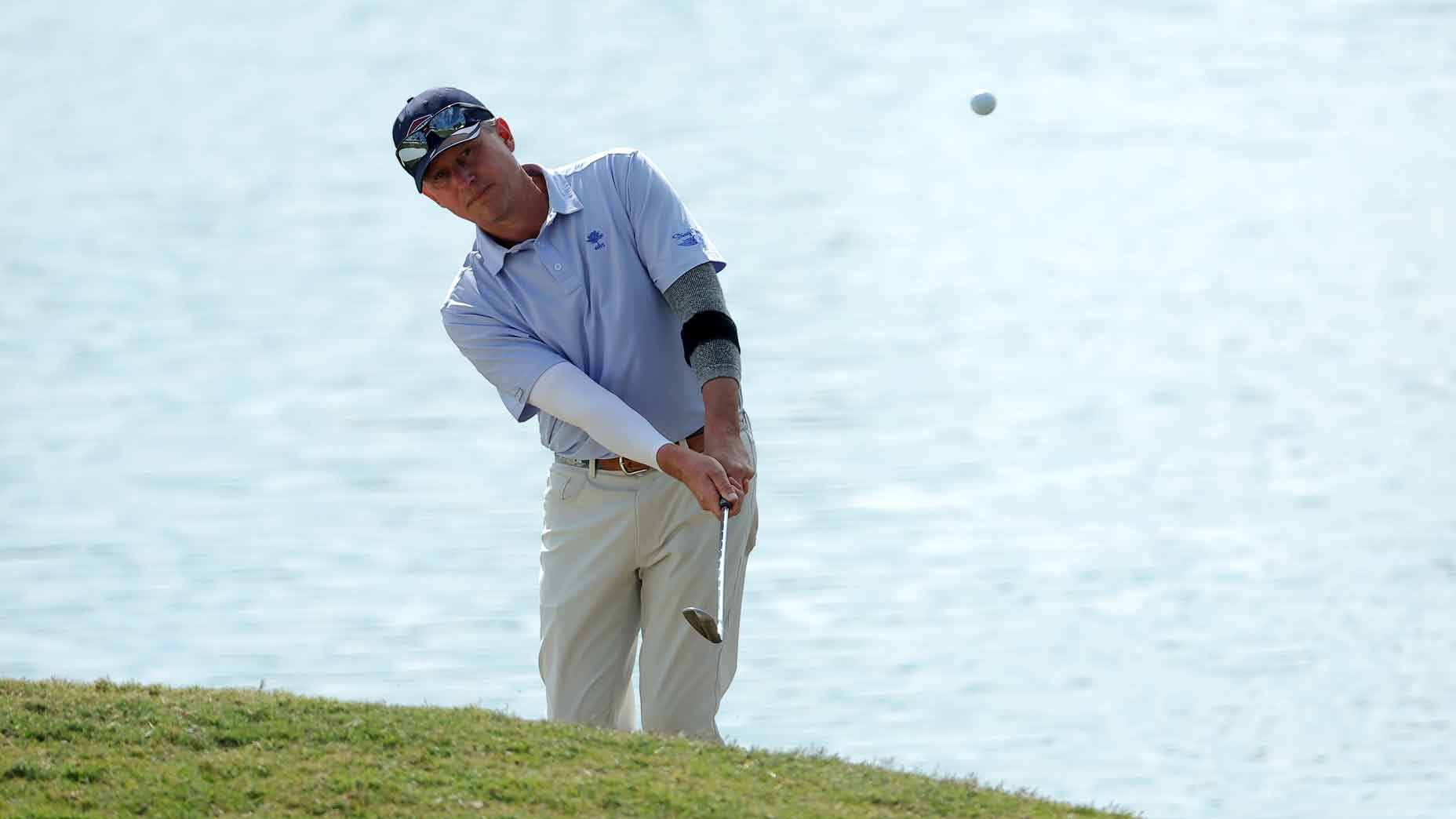The 147th British Open wrapped up Sunday with Tiger Woods charging up a major leaderboard and with Francesco Molinari hoisting the claret jug. The week in Scotland was full of thrills, and our staff reflects on their most memorable, on and off the course.
A moonless night and a par to remember
By Alan Shipnuck
I’m not that old but I am a dinosaur. I started covering the Open long before the Internet existed. In those halcyon days, writing only for a weekly magazine, I would routinely sneak out of the press tent around supper time and play golf until the sun set, around 10 p.m. Some combination of fellow SI warriors Michael Bamberger, John Garrity and Gary Van Sickle served as wingmen. These twilight rounds on the linksland were one of the great pleasures of the job.
Times change. Last week I was at Carnoustie until dark every night — typing for GOLF.com, tweeting, taping videos and podcasts. My clubs were locked away in the trunk of my rental car, like a dirty secret. On Friday, after a long day at the paragraph factory, I met Bamberger and fellow colleague Sean Zak for a late dinner in St. Andrews. It’s a bit of a drive to get from there to Carnoustie but I had chosen to stay in the Auld Grey Toon because I love it so much. It was ’round midnight when dinner adjourned. There was never any doubt of the next stop: the 18th tee of the Old Course. We parked on The Links road and walked briskly across the ancient sod.
It was a moonless night, but the hotels lining the fairway provided some ambient light, as did the flashlights on our phones. Mike, Sean and I ripped our drives, the sound echoing off the buildings like gunfire as the balls disappeared into the gloaming. Searching for the balls was like an Easter egg hunt, only more fun. My drive turned up well across the road that bisects the fairway. It was too dark to see the pin so I aimed for a streetlight that was roughly the center of the green. My wedge shot felt a hair thin but right on line. Mike played his shot just short of the green, while, sadly, Sean was in pocket, both his drive and mulligan having disappeared into the night.
MORE: Tour Confidential discusses Molinari’s win and Tiger’s finish
We walked toward the green. The big clubhouse was dark and foreboding, the town deserted. My heart skipped a beat when I finally saw my ball: perched tenuously on the precipice of the Valley of Sin, 20 feet below the hole. With Sean acting as caddie and gaffer, Mike rapped a putt up the hill to 25 feet. I grinded with absurd intensity on my putt and hit a good one, leaving a couple of feet.
As Mike was lining up his putt I became aware of a presence on the edge of the green, a gent watching us intently. Gulp. Johnny Law? Still, nothing was keeping me from consummating the hole. I stroked in a left-edge bender for one of the most satisfying pars of my life.
The dude who was watching us turned out to be another wayward Yank. He saw us on the green, snagged a putter from his hotel lobby and came out to join us. We parted ways and then Mike, Sean and I wound up having up-and-down contests out of the Road Hole bunker among other hijinks.
Across my whole time at the Open, this was all the golf I played. It’s a lot of work to lug your clubs to Scotland to play only one hole. It was worth it.
A tranquil run and chance meeting with an old friend
By Michael Bamberger
I stayed in St. Andrews during the Open, or on its outskirts, and I jogged several times through the old town. The Senior British Open is being played this week on the Old Course, but that’s not why the course was closed for play on Sunday, the day Francesco Molinari won 45 minutes up the coast in Carnoustie. It was closed on Sunday because it is always closed on Sundays. It is closed on Sundays because Old Tom Morris, famous custodian of the links, wanted it closed on Sundays. He famously leaned out of his window one Sunday, in a house overlooking the 18th green, and said to the players below, “If you dinna need a rest on the Sawbath, the links does.”
I jogged the course, or parts of it, on Sunday. I avoided Swilken Bridge. The tourists, without any sort of official help, were lined up to take snaps of it.
I first became aware of this bit of golf lore in 1991, courtesy of a man named David Joy, an artist and actor and native son of St. Andrews who just then was developing Old Tom as a character. I had heard about him from a faculty member at the University of St. Andrews and went to visit him, in an old stone farmhouse on the outskirts of town. It was an extraordinary afternoon. We talked for a while, he left, came back in all his wooly Old Tom garb and told me his life story — that is, Old Tom’s life story — in character. Holy crow. I wrote it up in a book. I’ve thought of Joy often over the years, but I had never seen him since that day.
On Wednesday of Open week, I went for a run, first into town, then up a long, long hill out of town. I don’t map or plan my runs. I just run until I don’t feel like it anymore, or until something captures my interest, and I kept going up this country-lane hill and for some reason was not getting tired. When I saw a spectacular-looking restaurant in the middle of farm fields I stopped to take a look.
Then I noticed an artist’s studio behind it, filled with spectacular modernistic seascapes. There was a note from the artist inside: if you wanted to see him, knock on the door in the house behind it. It was starting to feel familiar.
I knocked on the door and David Joy answered. He remembered our visit and he had the book on his shelf, with hundreds of others. He’s in his late 60s and recovering from a stroke and learning to paint again and doing it spectacularly well. He knows all about the movie about Young Tom Morris that came out last year but kept his distance from it. He played Old Tom hundreds of times in various parts of the world.
“Did you ever get bored with it?”
“Never,” he said. “It was never scripted. I never did it the same way twice.”
I asked him what his lowest handicap ever was. “A grumpy two,” he said.
He talked about how practice was frowned upon, in his golfing boyhood. Even practice swings. “We practiced by playing,” he said.
We talked about his sons, the books he has written and is writing, working with John Cleese in Titleist spots from long ago, the modern game, the old game. He didn’t lapse into Old Tom. We were in the here and now.
If you like mystery and weird coincidences, Scotland is a good place to be.
We’re all players in Scotland
By Sean Zak
Between the bed and breakfast host, the cheery folks at the Dunvegan, the Carnoustie road signs that say FAMOUS GOLF TOWN or even the Edinburgh airport’s Delta attendant, there’s a consistent reminder in Scotland: we’re all players of this crazy game.
When I spotted a caddie on Carnoustie’s 4th tee box all alone Tuesday evening, I was reminded of that again. There was Martyn Thompson, charting the course for Rhys Enoch, the (now) 412th-ranked player in the world. It was 6 p.m. local time and Thompson held a 58-degree wedge.
One half of me thought, “Leave him alone. Let the man do his job.” The other half said, “Damn it, ask him about Carnoustie’s wicked-fast fairways!” Curiosity may have killed the cat, but it nurtured our convo.
“Oh, gosh, they’re probably running 20-plus,” he said of the hard-pan runways. “The greens, maybe 10 1/2.”
Next question: Why the wedge?
“I’ve just had this one re-shafted,” he said, sounding like a player. “I struggle to walk anyway without a club in my hand.”
He didn’t mean that literally, of course. He would be lugging a Tour bag all week, and he’s plenty fit to do so. “I teach for a living and always teach with a club in my hand,” Thompson clarified. “It’s like I was born with one in my hand. It’s always a part of me.”
As we walked up the fairway, my new friend was an open book. Thompson, who teaches in central England, just so happened to make the cut on the number at the 1999 Open at Carnoustie, when it was dubbed Car-Nasty. To play four days at an Open, he admits, is a feat. (He’d help Enoch make the cut, too. On the number, because of course.)
Thompson took over conversation. I just nodded and kept up. He talked about how much the rough had changed at Carnoustie. “The second shots are pretty easy around here,” he said. “It’s about where you’re playing from.” Francesco Molinari might agree. All of this information came mostly unprompted within the first 10 minutes of meeting him.
That was the first time I met Thompson. The second time came five days later. He was seated on a curb with a sharpie and British Open flag in hand. Throughout the week he had snagged an autograph from every Open champion on the property. Ernie Els, Jordan Spieth, Gary Player and 17 others. Even Tiger Woods. His caddying gig had finished hours earlier, so Thompson sat alone, flag in hand. There was one more champion signature to obtain, and Molinari was just finishing his press conference. Thompson was tired, but committed to the task. He didn’t drive six hours, caddie (successfully) for seven days and pester 20 legends for autographs just to let Mr. Molinari off the hook. Rest assured, he’d get that signature.
After that? Well, it was time for some well-deserved rest. Not too much, though. The English PGA Professional Championship begins Tuesday and he has a 2:13 local tee time.







